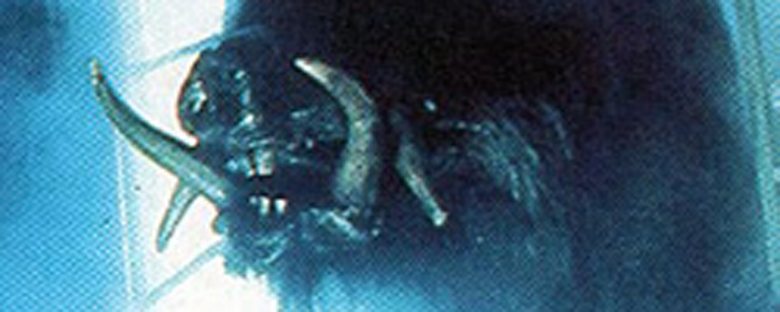Reviews
Russell Mulcahy
Australia, 1984
Credits
Review by Tom Huddleston
Posted on 11 October 2005
Source VHS
Related articles
Features: 31 Days of Horror
In Australian cinema, nature is a force to be feared. The so- called ‘landscape’ pictures which redefined Australian national cinema in the 1970’s ( Picnic At Hanging Rock, Walkabout, and The Last Wave among others) pitted man against a vast and implacable wilderness, unyielding and alien. Inspired and informed equally by the westerns of Ford and Leone and by European art cinema, the landscape genre celebrated the otherness of outback and desert, the haunting emptiness of Australia’s wide open spaces. In his debut feature, Russell Mulcahy blurs the line between the landscape picture and the horror film, more specifically the popular cycle of ‘animal horror’ pictures that sprung up in the wake of Jaws. The forces of nature, so forbidding and faceless in Picnic and Walkabout are now given form and focus. And happily for all fans of the bizarre and the grotesque, that form is a giant, hairy, man-eating pig.
Razorback was clearly intended as Mulcahy’s audition for the Hollywood A-list, in thrall to blockbuster cinema and to the pop promos with which the director made his name, albeit filtered through a rough and ready low budget post-Mad Max exploitation aesthetic. The influences of Spielberg and Lucas and the nascent MTV channel are all over the film, with lighting setups lifted directly from Close Encounters: unexplained floods drenching the frame in orange and white, shadows deep and concealing, flashlight beams whiting out the frame. But there’s an underlying subversive streak here too, a commitment to artistic integrity that simultaneously elevates and unbalances the picture.
On many levels, Razorback adheres to the established formulae of the film cycle to which it belongs, mimicking Jaws, Grizzly, Piranha and countless other lamebrained man vs. beast spectacles. Mulcahy glories in genre clichés: the eerily creaking porch swing, the rampaging beast’s eye camerawork. The unnatural size and malevolent intelligence of the beast are a given, as is the isolated rural nature of the surroundings. There are nods towards environmental activism, and a familiar element of corporate malfeasance as the owners of a local pet food cannery are implicated in the beast’s rampage.
On a purely visceral level the film succeeds terrifically, overcoming narrative flaws and logical lapses through a combination of stunning landscape photography (the film was shot by Road Warrior cinematographer Dean Semler) and brutally effective editing—jarring jump cuts abound, as sharp objects swing into frame, bottles explode and gunshots ring out.
The characters, too, conform to the stereotypes established by Jaws—the fish-out-of-water hero, the grizzled hunter, the gung-ho locals out to slaughter the beast and the bespectacled ecologist who urges caution. But it’s what Mulcahy and screenwriter Everett de Roche do with these caricatures that sets the film apart. The exploration of gender roles is a topic that Australian filmmakers seem to find endlessly fascinating, from the cross-dressing Barry Humphries to films like Strictly Ballroom and Priscilla, Queen of the Desert. Razorback is no exception, its Canadian hero a living embodiment of gender confusion. Centring the film around a North American protagonist is partly a sop to commercial concerns, but also acts as a way to examine the differences between American and Australian notions of masculinity. Carl Winters is introduced as a meek, apron- wearing househusband, in sharp contrast to his wife Beth, an independent, socially conscious journalist. But when Beth enters the flyblown, male dominated outback town of Magulla (literally translated: Guts) she is quickly overwhelmed and brutally murdered. Carl flies in to investigate, and it is his faltering journey from coward to hero that forms the film’s central narrative arc. In an echo of neo- westerns like Straw Dogs and Race With the Devil, Carl must find the strength within himself to avenge his wife’s murder, and destroy the marauding beast that threatens the town.
Midway through the film Carl finds himself abandoned in the wilderness, hunted by the titular pig and miles from anything approaching civilisation. The landscape is as empty and desolate as the surface of Mars, beautiful and terrifying in equal measure. Our hero suffers a literal baptism of fire, scorched by the unrelenting sun. Emerging from the desert, he sheds his feminine qualities and is gloriously reborn in the image of the archetypal Australian male. This resurrection is humorously reinforced when Carl meets ecologist Sarah Cameron, who nurses him back to health and dresses him in the clothes of her deceased father, whose masculine identity Winters also partially assumes.
The stage is now set for the inevitable showdown between man and pig, a confrontation staged within the mechanized confines of the Petpak food cannery. But with the film’s budget noticeably haemorrhaging, the sequence collapses in a confusion of light, noise and risible special effects. The beast, kept hidden for much of the film, is now regrettably revealed. The only surprise is that it doesn’t have wheels.
Razorback is never going to be placed among the pantheon of classic horror; at its heart it is a simple exploitation piece, as nasty and brutish as the eponymous porker. But it manages to transcend expectations, thanks largely to Mulcahy, de Roche and especially Semler. It is as though the filmmakers, despite their best intentions to create a straightforward, commercially viable genre piece, were simply too Australian, too non-Hollywood to ignore the wider potential inherent in the material. It is this inability to subsume their artistic integrity to the crass requirements of the box office that ultimately sinks the film. Forced to choose between art and commerce, the film’s divided loyalties ultimately tear it apart. What remains is a fascinating, hugely enjoyable failure.
We don’t do comments anymore, but you may contact us here or find us on Twitter or Facebook.



